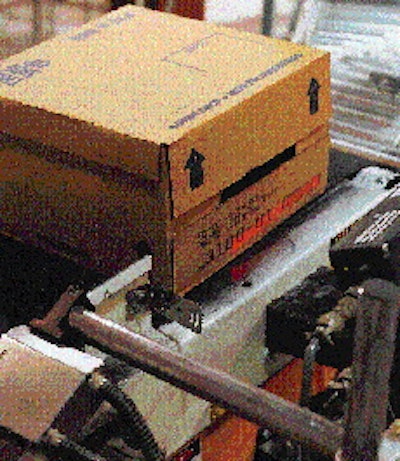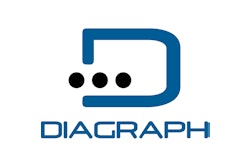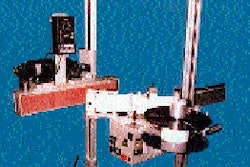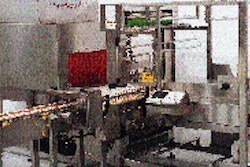While more sophisticated machinery such as fillers and case packers typically drive packaging line design, smaller pieces such as coders and conveyors often present unusual opportunities to broaden a line's capabilities. A good example is paint manufacturer Valspar Corp., whose engineers created a unique coding solution for a new 1-gal canning line. Like a chess game where each move must account for several possibilities, its coding system was engineered to do the work of two other functions--automatic batch code verification and real-time production monitoring--beyond just applying a production code. The Minneapolis-based company's new Statesville, NC, plant, operational for a little over a year, manufactures 167 SKUs on two production lines, destined for outlets such as Lowes and Wal-Mart. When considering coding systems for the 1-gal steel can line, Valspar engineers sought a way to make sure that the batch code applied to the cans matched the code on the case. Matching codes are important in the event that product in the field needs to be traced back to its initial production origin. Obviously, mismatched codes would yield conflicting data about when the product in question was produced. In Valspar's other plants, marking systems for primary and secondary packaging are independent, stand-alone systems that do not communicate with one another. With the opportunity to create a new line from scratch, engineers at the Statesville plant chose to electronically link marking systems for primary and secondary packaging. On the 1-gal filling line, a Linx 4200 small-character coder from Diagraph (St. Louis, MO) applies a batch code to the bottom of cans after labeling but before filling. After cans are packed four to a case, a three-head PEL series large-character ink-jet printer, also from Diagraph, prints a UPC-SCS bar code, batch code and other production codes to the side of the case. Because the two printing systems are electronically linked, batch code mismatches can be detected and flagged for correction before any significant amount of product is miscoded. Statesville was also able to take advantage of more up-to-date ink-jet printing technology by using the high-resolution carton coder to print bar codes on cases, instead of using bar code labelers. Printer/applicators are used at Valspar's other plants since their older ink-jet coders possess neither the resolution nor print quality to produce bar codes. "We just felt we could do both steps with one piece of equipment," says Mike DiMaggio, plant engineer. "Plus in our other plants the ink-jets were more reliable than the label printers." Valspar uses case codes both for its own and its customers' inventory control systems. Another benefit of the system is automatic production data collection. Although the primary function of the Allen-Bradley (Milwaukee, WI) model 2755 bar code decoder is to verify bar code quality, it also forms the basis of a real-time production counting system. Custom software written by Diagraph counts each case of product as it's scanned, uploading data to the plant's host computer in real time. Detailed production data can then be used to analyze the line's uptime efficiency. A final benefit for Valspar is fast changeover. Case marking information for the case coder--which includes a manufacturer and sometimes customer part number, alphanumeric product description and UPC-SCS bar code--is stored on a database on a desktop computer for easy recall. Coding changeover can be done in about two minutes. Changing coding information at Valspar's other plants takes closer to ten minutes, according to DiMaggio. Scanning shortcut In operation, an operator at the labeler enters the batch code at the keypad of the small-character coder, which then applies the code to the bottom of the cans as they roll on their sides. (A wire twist guide rail orients cans so they can be delivered standing upright to the conveyor feeding the filler.) To program the carton marking information that will be printed on the cases, another operator gets to take a short cut. He removes one of the first cans of the batch from the line, and scans the UPC bar code on the paper label with a Welch Allyn (Skaneateles Falls, NY) hand scanner that's connected to the desktop computer. That unique UPC code is then cross-referenced against a database of all carton marking information for all of Valspar's SKUs, kept on that PC's hard drive. Once the correct carton marking information is recalled, it is displayed on-screen. The operator then simply enters the batch code, which should be the same as the batch code that the first operator entered. "When that batch number is entered," says DiMaggio, "the computer double-checks with the Linx printer to be sure that what's on the bottom of the can is the same as what that operator has entered for the carton code. When there's a match, it downloads the label information to the case coder." Since both printers are linked to one computer, why must the code be entered twice, by two separate operators? "We could have pulled the batch code from the Linx printer," concedes DiMaggio, "but as a quality check we wanted them to type it in twice. That way, it gives the system two chances to make sure the correct batch code was entered." "The other thing it's done for us from a quality standpoint is that we now have consistent carton coding information every time, regardless of the operator," says Steve Knier, plant manager. "All words are spelled correctly, spaced properly and printed consistently." After cases are coded, they convey past the Allen-Bradley bar code decoder that scans the printed bar code to verify its readability and accuracy. Rejected cases are diverted onto a conveyor spur by a reject arm. "At a rate of about 4꺜 cases a day, it might kick off four boxes," says DiMaggio. "And it's almost always due to the box, not the printer." Knier confirms that print quality of both coders is an improvement over the older coders at Valspar's other plants. Data collection Perhaps the more unusual part of Valspar's coding setup is the custom software written by Diagraph that permits Valspar to use the bar code verifier as a data collection tool. As the Allen-Bradley scanner verifies the bar code on each case, the software records the case entering into inventory, on a case-by-case basis. That data is uploaded on a real-time basis to the plant's host computer. As a result, that computer can track any interruption to production. "While I'm sitting in my office, I can watch the gallons click," says DiMaggio. "It gives me the opportunity to see if the line is running smoothly at any given moment." Knier adds: "We even have the ability to pull it up from a remote location if we wanted to, via modem, real-time." But plant management uses this simple yet clever data collection point as more than just a monitoring device on the plant floor. "We can print a detailed list or a daily summary that lists each batch, number of gallons, overall gallons for the day, and average gallons per minute," says DiMaggio. "We can also do a weekly report." The wealth of data also invites in-depth study of the line's efficiency. "We can statistically take a look at what we're doing out there from a production standpoint," explains Knier. "And if we implement any improvements, we will have the hard data to determine whether and how much those improvements make a difference." Between the batch code verification and the data collection, Valspar is able to make its coding system do double and even triple duty, solving several quality control issues at once, thanks to advance planning on the front end. "We had an opportunity to do some things that the other plants did not have readily available to them," concludes Knier.


























